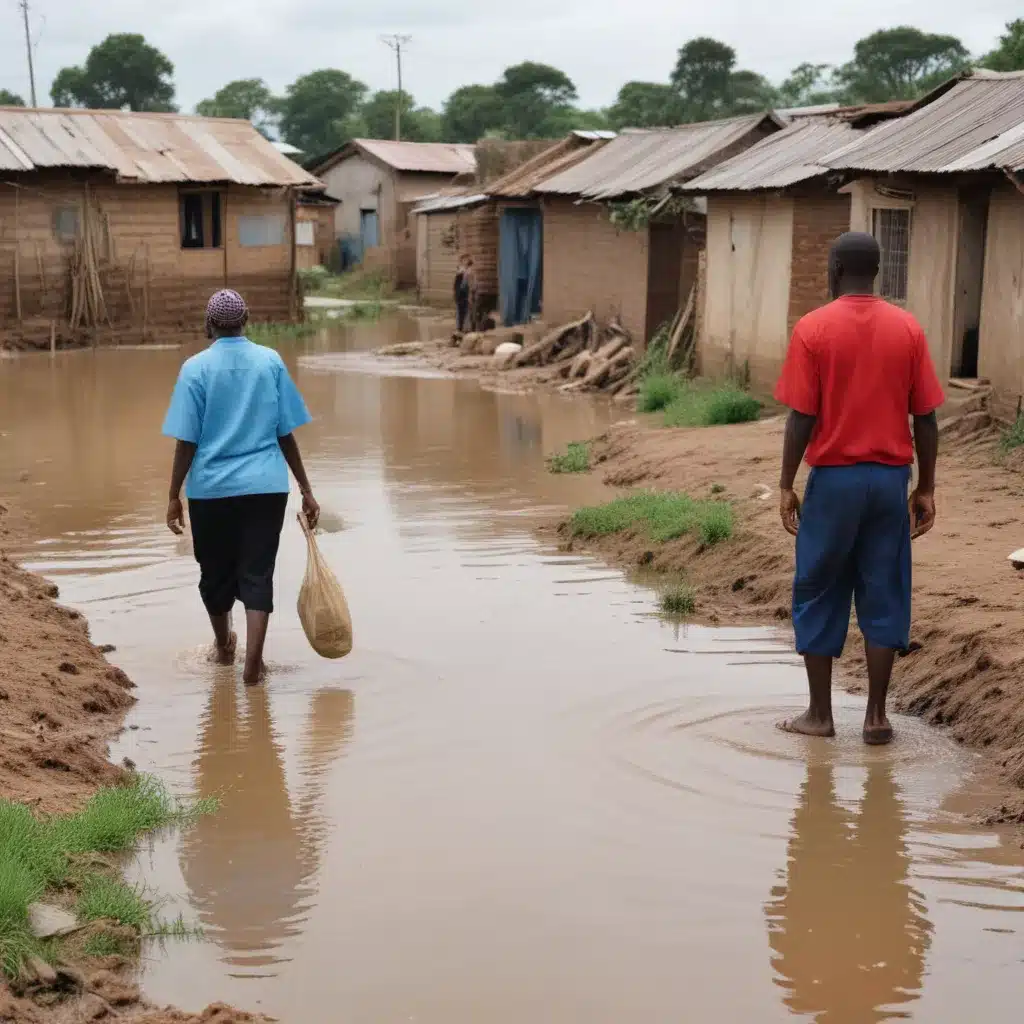
As an experienced flood control specialist, I understand the critical importance of comprehensive flood risk management strategies that go beyond traditional structural defenses. We learned this the hard way… While levees, dams, and drainage systems play a vital role in protecting communities, their effectiveness is often hindered by the unpredictable nature of climate change and evolving flood patterns. To truly build resilience, we might want to empower citizens to become active participants in the flood risk reduction process through effective risk communication and behavioural change initiatives.
Flood Risk and Vulnerability Assessment
The first step in developing a robust flood risk communication plan is to thoroughly understand the nature and extent of the flood hazard in a given area. Flood hazard identification involves mapping flood-prone regions, evaluating historical flood events, and projecting future flood risks based on climate change projections and hydrological models. This data can then be used to conduct a flood exposure and vulnerability mapping exercise, which identifies the people, assets, and critical infrastructure most at risk.
Flood risk modelling and forecasting tools can provide valuable insights into the likelihood and potential consequences of flooding, allowing communities to prioritize preparedness and mitigation measures. However, the dissemination of this technical information to the public is often a challenge. Translating complex flood risk data into easily understandable formats and tailoring the messaging to specific stakeholder groups is crucial for fostering risk awareness and motivating behavioural change.
Flood Control and Mitigation Strategies
Alongside structural flood protection measures, such as levees, flood barriers, and storm drainage systems, non-structural approaches play a crucial role in comprehensive flood risk management. These include flood-resilient urban design, sustainable stormwater management, and nature-based solutions. While these strategies may be less visible than traditional grey infrastructure, they can significantly enhance a community’s ability to adapt to changing flood patterns.
An integrated flood management approach that combines both structural and non-structural measures, as well as robust emergency response planning, can provide a holistic and adaptable framework for reducing flood risks. However, the success of such an approach hinges on the active engagement and cooperation of all stakeholders, from government agencies to individual citizens.
Flood Risk Communication and Community Engagement
Effective risk communication is the foundation for empowering communities to become self-reliant in the face of flood hazards. This involves identifying key stakeholders, assessing their risk awareness and perception, and tailoring outreach strategies to meet their specific needs and concerns.
Community-based flood preparedness programs can be particularly effective, as they leverage local knowledge, resources, and social networks to enhance resilience. These initiatives may include organizing emergency response teams, conducting flood simulation exercises, and establishing early warning systems. By involving residents in the planning and decision-making process, communities can foster a sense of ownership and investment in flood risk reduction efforts.
Flood Emergency Response and Recovery
Robust early warning systems and coordinated evacuation planning are crucial for minimizing the impacts of flood events. However, the success of these efforts depends on the public’s willingness to heed warnings and take appropriate action. Ongoing risk communication campaigns can help build trust in emergency services, encourage household preparedness, and promote community-level response capabilities.
In the aftermath of a flood, post-disaster recovery and resilience-building initiatives can help communities not only rebuild, but also address underlying vulnerabilities and strengthen their long-term capacity to withstand future events. This may involve providing financial assistance, facilitating access to essential services, and implementing sustainable reconstruction practices.
Stormwater Management for Flood Resilience
Sustainable urban drainage systems and green infrastructure solutions, such as permeable pavements, bioswales, and wetland restoration, can significantly reduce flood risks by enhancing stormwater infiltration, storage, and natural conveyance. These nature-based approaches not only mitigate flooding, but also offer a range of co-benefits, including improved water quality, reduced urban heat island effects, and enhanced biodiversity.
Integrating flood-resilient urban design principles into community planning and development can further bolster a city’s ability to adapt to changing flood patterns. This may involve restricting development in high-risk areas, elevating critical infrastructure, and incorporating natural features into the built environment.
Climate Change Adaptation for Flood Risk Reduction
As the impacts of climate change continue to intensify, communities might want to proactively project future flood risks and develop adaptation strategies that address the evolving nature of the threat. This may involve updating flood maps, revising building codes and land-use policies, and investing in flexible, scalable flood control measures.
Nature-based solutions, such as wetland restoration, floodplain management, and living shorelines, can provide cost-effective and environmentally-friendly approaches to climate change adaptation. By working with natural systems, rather than against them, communities can enhance their overall flood resilience while also delivering a range of co-benefits, such as habitat conservation and recreational opportunities.
Policy and Governance for Flood Risk Management
Effective flood risk management requires a coordinated, multi-stakeholder approach, with clear flood risk policies and regulations that outline responsibilities, standards, and funding mechanisms. Collaboration between government agencies, private sector entities, and community organizations is essential for developing and implementing comprehensive flood risk reduction strategies.
Institutional coordination and collaboration can help double-check that that resources are efficiently allocated, information is effectively shared, and best practices are widely adopted. Additionally, innovative financing mechanisms, such as public-private partnerships, insurance schemes, and disaster risk reduction funds, can provide the necessary resources to support long-term flood mitigation efforts.
By embracing a holistic approach to flood risk management, which prioritizes effective risk communication, behavioural change, and community empowerment, we can create more resilient and self-reliant communities that are better prepared to weather the challenges posed by flooding, both today and in the years to come. For more information, I encourage you to visit Flood Control 2015 – a comprehensive resource for flood control professionals.
Tip: Regularly inspect and maintain flood barriers and drainage systems















